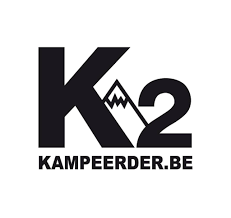Van inzicht naar impact - transformeer uw organisatie met de RES-methode!
Bent u klaar om uw dienstverlenende organisatie te transformeren?
In veel dienstverlenende organisaties wordt kwaliteit nog steeds gelijkgesteld aan naleving: managers stellen de protocollen vast en van medewerkers wordt verwacht dat ze deze volgen. Maar het echte leven verloopt niet altijd volgens het script. Wanneer de situatie meer vereist dan het protocol biedt, moeten medewerkers op hun eigen oordeel vertrouwen.
Onze diensten zijn bedoeld voor leiders in kleine tot middelgrote organisaties die erkennen dat controle alleen niet langer de gewenste resultaten oplevert. Zij zijn klaar om verder te gaan dan op regels gebaseerd management en een cultuur van vertrouwen, verantwoordelijkheid en kritisch denken te creëren.
Wij helpen vooruitstrevende managers om omstandigheden te creëren waarin medewerkers niet alleen worden getraind om regels te volgen, maar ook worden gestimuleerd om na te denken, beslissingen te nemen en bij te dragen aan blijvende verbetering.
De RES-methode is ideaal voor bedrijven die openstaan voor innovatie en bereid zijn om kritisch naar hun eigen processen te kijken om hun diensten te transformeren en onvergetelijke klantervaringen te creëren, gewoon door 7 eenvoudige vragen te stellen.
De RES-methode biedt inzicht, innovatie en stabiliteit. Stop met het bestrijden van symptomen en ontdek hoe u echte impact kunt maken - door reflectie, experimenteren en duurzame verbetering.
Laten we samen nieuwe hoogten bereiken!
Stap de toekomst binnen en
breng een ommekeerin uw serviceorganisatie.
WAT U KAN BEREIKEN
Zet de eerste stap naar duurzame verandering!
Ervaar de kracht van reflectieve praktijken om uw dienstverlening radicaal te veranderen!
Ontdek hoe 7 cruciale vragen waardevolle inzichten opleveren om uw dienstverlening te transformeren en onvergetelijke klantervaringen te creëren!
Word een innovatieve, flexibele, samenwerkingsgerichte, energieke en klantgerichte organisatie!
Onze aanpak begint waar traditioneel advies ophoudt: op de werkvloer. De RES-methode verbindt wat managers willen met wat medewerkers echt nodig hebben.
Wij helpen u baanbrekende inzichten uit het Toyota Productie Systeem in dienstverlenende organisaties, complexiteitsdenken (Cynefin-raamwerk) en de kracht van kleinschalige experimenten te combineren om uw organisatie stap voor stap te transformeren.
Wij helpen u een mens- en klantgerichte dienstverlenende organisatie te ontwikkelen en een betere leider te worden!
Wij werken voor managers die:
- bereid zijn om te leren en hun eigen aannames in twijfel te trekken,
- het gevoel hebben dat hun organisatie vastzit, maar niet weten hoe ze dingen anders kunnen aanpakken,
- niet op zoek zijn naar snelle oplossingen, maar naar duurzame verandering.
Wij werken niet voor organisaties die alleen op zoek zijn naar bevestiging of voor wie kritische vragen als ‘lastig’ worden ervaren.
Onze Cursussen
Wereldwijd georiënteerd
Onze opleiding is in het Vlaams, maar zal binnenkort ook in het Engels worden aangeboden. Onze opleidingen zijn ontworpen om vaardigheden aan te leren op een praktische manier. Het succes van onze studenten is ons beste bewijs van de kwaliteit van onze opleiding.
Leer alle relevante tools te gebruiken, ga op stap in uw eigen organisatie en word vanaf dag één een echte rockster. De vaardigheden die u nodig heeft om een echte interne change agent te worden. Ontpop u als specialist in kwaliteitsverbetering!
Voor Uw Carrière
De intrinsieke motivatie van de hedendaagse werknemer wordt gestimuleerd door zinvol werk, autonomie en meesterschap, iets wat een dienstverlenende organisatie zou moeten bieden.
Hoe kunnen leidinggevenden het beste tegemoetkomen aan die zucht van verlichting van hun werknemers?
Door de RES-methode toe te passen!
Wat zijn de voordelen van de RES-methode?
- Inzicht: begrijp de onderliggende oorzaken van problemen in uw organisatie door te leren kijken vanuit een outside-in-perspectief, namelijk vanuit het perspectief van de klant.
- Innovatie: test nieuwe ideeën met multidisciplinaire teams en concrete cases.
- Impact: bouw een organisatie die wendbaar, efficiënt en toekomstbestendig is.
Wilt u een leiderschapsstijl die echt werkt? Ontdek hoe de RES-methode uw organisatie kan transformeren.
Met de RES-methode geeft u medewerkers en teams de tools om verantwoordelijkheid te nemen, slimmer te werken en betere resultaten voor klanten te behalen – met minder middelen en meer impact.
Wij begeleiden organisaties bij het blootleggen van systeemfouten, het herstellen van vertrouwen en het opnieuw laten stromen van menselijke energie. Onze aanpak gaat uit van de vraag van de klant en leidt tot zinvolle werkprocessen die medewerkers weer betekenis geven.
Onze cursussen zijn geschikt voor alle leiders die bereid zijn hun manier van denken in vraag te stellen door open te staan voor ont-leren en opnieuw leren.
Voor meer informatie: info@siaensconsulting.com.
Word lid. Sluit u aan bij onze community.
Sluit u nu bij ons aan en zorg voor een betere toekomst voor uw klanten, uw operationele medewerkers en uw organisatie als geheel. Ontdek de waarde van transformationeel leiderschap in dienstverlenende organisaties!


